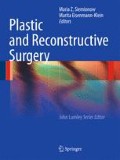Summary
Burn trauma is still a significant cause of morbidity and mortality in the United States. It causes a spectrum of disability and deformity primarily by damaging the integumentary system of its victims. However, it is the systemic effects caused by sepsis, fluid and electrolyte imbalance, shock, inhalation injury and myone-crosis that are the usual agents of death. Patients must be assessed and treated expectantly to ensure adequate rehydration, and prevent acute life-threatening complications resulting from infection, respiratory burns, poisoning and compartment syndromes. Close monitoring is required during the initial resuscitation when large volumes of fluid will need to be administered. The modern trend is for early excision of the burn wound to speed rehabilitation and lessen the risk of sepsis. This is facilitated by the increasing use of cultured skin and skin substitutes. Finally, the importance of rehabilitation and secondary surgery cannot be overstated in terms of re-integrating the burned patient into society as well as returning him or her to the workforce.
Access this chapter
Tax calculation will be finalised at checkout
Purchases are for personal use only
References
American Burn Association National Burn Repository (2005 report), which data base includes information on more than 1,26,000 acute burn admissions from 70 burn centers in the United States.
Arturson MG. The pathophysiology of severe thermal injury. J Burn Care Rehabil. 1985;6:129, 185.
Baxter CR. Fluid volume and electrolyte changes in the early post-burn period. Clin Plast Surg. 1974;1:693–703.
Fraulin FO, Illmayer SJ, Tredget EE. Assessment of cosmetic and functional results of conservative versus surgical management of facial burns. J Burn Care Rehabil. 1996;17:19.
Heggers JP, Ko F, Robson MC, Heggers R, Kraft KE. Evaluation of burn blister fluid. Plast Reconstr Surg. 1980;65(6):798–804.
Ireton CS, Turner WW Jr, Cheney JC, Hunt JL, Baxter CR. Do changes in burn size affect measured energy expenditures? J Burn Care Rehabil. 1985;6:419.
Janzekovic Z. A new concept in the early excision and immediate grafting of burns. J Trauma. 1970;19:1103.
National Fire Protection Association (2005); American Burn Association National Burn Repository (2005 report); US Vital Statistics (2004).
National Hospital Ambulatory Medical Care Survey; National Ambulatory Medical Care Survey; Medical Expenditure Panel; CPSC/NEISS (National Electronic Injury Surveillance System) (2000–2004 data).
National Hospital Discharge Survey (2003); Agency for Healthcare Research and Quality: Healthcare Cost and Utilization Project/National Inpatient Sample (2003); Selected state hospital data systems (2002–2004); American Burn Association National Burn Repository (2005 report).
Pruitt BA Jr. The diagnosis and treatment of infection in the burn patient. Burns. 1984;11:79.
Rutan TC, Herndon DN, Van Osten T, Abston S. Metabolic rate alterations in early excision and grafting versus conservative treatment. J Trauma. 1986;26:140.
Silverglade D, Zacher JB, Ruberg RL. Improved splinting of oral commissure burns: results in 21 consecutive cases. Ann Plast Surg. 1982;9:316.
Waymack JP, Herndon DN. Nutritional support of the burned patient. World J Surg. 1992;16:80.
Wilmore DW, Long JM, Mason AD, Pruitt BA Jr. Stress in surgical patients as a neurophysiologic response. Surg Gynecol Obstet. 1976;142:257.
Editor information
Editors and Affiliations
Rights and permissions
Copyright information
© 2010 Springer-Verlag London Limited
About this chapter
Cite this chapter
Boyd, J.B. (2010). Burn Trauma. In: Siemionow, M.Z., Eisenmann-Klein, M. (eds) Plastic and Reconstructive Surgery. Springer Specialist Surgery Series. Springer, London. https://doi.org/10.1007/978-1-84882-513-0_15
Download citation
DOI: https://doi.org/10.1007/978-1-84882-513-0_15
Publisher Name: Springer, London
Print ISBN: 978-1-84882-512-3
Online ISBN: 978-1-84882-513-0
eBook Packages: MedicineMedicine (R0)

